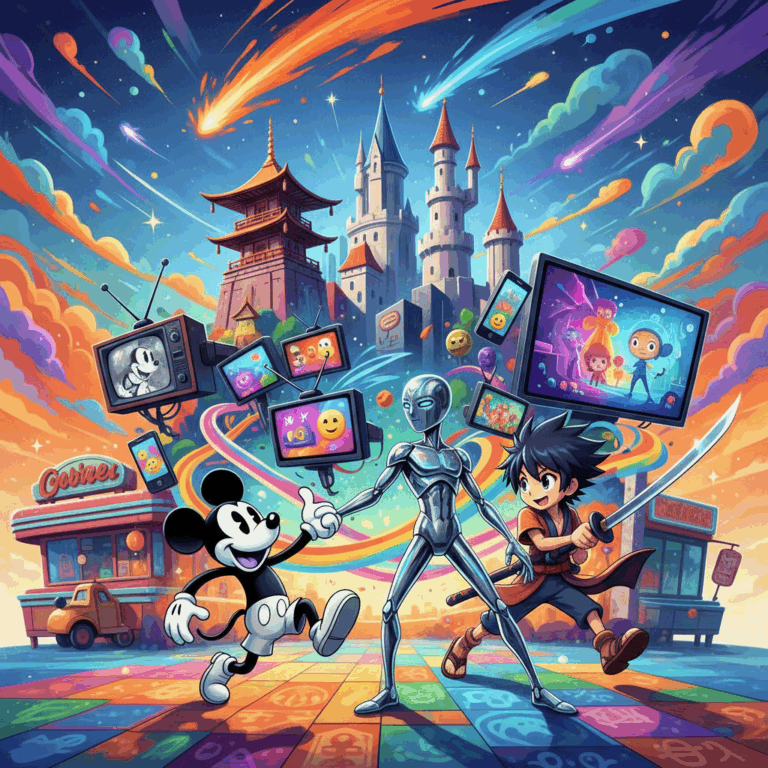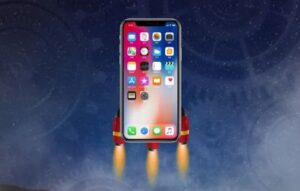Origins and historical influence of animation
The animation Its development began in the 19th century, marking a new path in visual narrative and storytelling. Its rise in the 20th century solidified it as an art form with significant cultural impact.
This discipline has transformed over time, evolving from simple moving drawings to complex audiovisual works that influence diverse cultures and generations.
Development and consolidation in the 19th and 20th centuries
Animation began as visual experiments in the 19th century, using primitive techniques that gave way to more elaborate forms in the 20th century.
With technological advances, animation became an artistic and cultural industry, giving life to countless characters and styles that marked an era.
During the 20th century, animation transcended its entertainment function to become a powerful medium of communication and social expression.
Multiple disciplines involved in the creation of animations
Animation is the result of the fusion of various disciplines such as drawing, sculpture, and computer science, creating unique and engaging visual experiences.
In addition, dramaturgy and music play a key role in bringing emotions and depth to animated narratives.
This interdisciplinary combination allows animation to transcend the graphic to become a universal cultural language.
Iconic figures and their cultural impact
The iconic characters Animation has left an indelible mark on global culture, becoming recognized symbols that transcend generations.
These characters reflect social values and collective aspirations, establishing emotional connections that go beyond superficial entertainment.
Its influence extends to multiple areas, from fashion to language, shaping cultural identities and fostering intercultural exchange.
Universal symbols and their reflection of social values
Characters like Mickey Mouse or Pikachu are universal symbols that represent values such as friendship, courage, and solidarity.
These characters act as social mirrors, reflecting the aspirations and challenges of different generations and cultures around the world.
Being recognized globally, they contribute to spreading positive values and establishing behavioral models adapted to different social contexts.
Influence on fashion, language, and the social imagination
Animation has significantly influenced the fashioninspiring styles and trends with visual elements of popular characters.
Furthermore, expressions and language specific to these animated figures have been incorporated into everyday communication, enriching the social imagination.
This influence is reflected in pop culture, where animation acts as an engine of innovation and constant cultural renewal.
Intercultural connection through entertainment
Animated entertainment is a powerful tool that fosters intercultural connection being accessible and attractive to diverse audiences.
Characters and narratives from different cultures are shared and valued worldwide, facilitating understanding and empathy between communities.
This cultural interaction helps to break down barriers and create a global dialogue based on shared experiences through animation.
Anime and its global significance
He anime It has achieved worldwide recognition, transcending its Japanese roots to influence diverse cultures and audiences. This has broadened its impact beyond entertainment.
Its global presence has fostered an interest in Japanese art, culture, and traditions, creating an international community of followers passionate about its unique stories and aesthetics.
Influence of Studio Ghibli and values promoted
Studio Ghibli is iconic in the world of anime, recognized for promoting values such as ecology, empathy and courage through deep and emotional stories.
His works have inspired reflection on nature and humanity, generating awareness and appreciation for the environment in different generations.
The impact of Ghibli transcends traditional animation, establishing itself as a global cultural phenomenon that connects diverse communities through art and storytelling.
Cultural and artistic manifestations derived from anime
He anime It has stimulated diverse cultural expressions, from cosplay and music to digital art and literature, creating a vibrant and diverse artistic ecosystem.
This influence can be seen at international festivals, exhibitions, and social media, where tributes are paid to his iconic characters and visual styles.
Interesting fact about the global influence of anime
Anime has inspired the creation of festivals and conventions that bring together thousands of people around the world, demonstrating its power to unite diverse cultures through shared passion.
This cultural expansion constantly redefines the relationship between art, community, and technology, promoting innovation and global artistic dialogue.
Innovation and education through animation
The animation It is a key tool for education, promoting inclusion and stimulating creativity, especially in young people.
Thanks to its diverse techniques, it allows content to be adapted in an accessible way, transforming learning into a more visual and understandable experience.
Furthermore, animation helps create inclusive environments where all students feel represented and motivated to express themselves.
Promoting inclusion and creativity in young people
Animation facilitates the participation of young people with diverse cultural backgrounds and abilities, promoting inclusion in educational spaces.
By creating their own animations, young people develop creative and technical skills that strengthen their confidence and critical thinking.
This educational practice fosters collaboration, respect, and appreciation for both cultural and personal diversity.
Importance in personal development
The process of animating encourages imagination, allowing young people to express emotions and values that they often cannot communicate verbally.
Thus, animation becomes a means for emotional and social growth, providing benefits beyond the academic sphere.
Innovative techniques and visual narrative evolution
Technologies such as digital animation, augmented reality, and artificial intelligence have revolutionized the way stories are told visually.
These tools allow for the creation of more dynamic, interactive, and personalized narratives that better capture the public's attention.
The constant evolution of narrative techniques drives creators to explore new formats that better connect with contemporary audiences.






